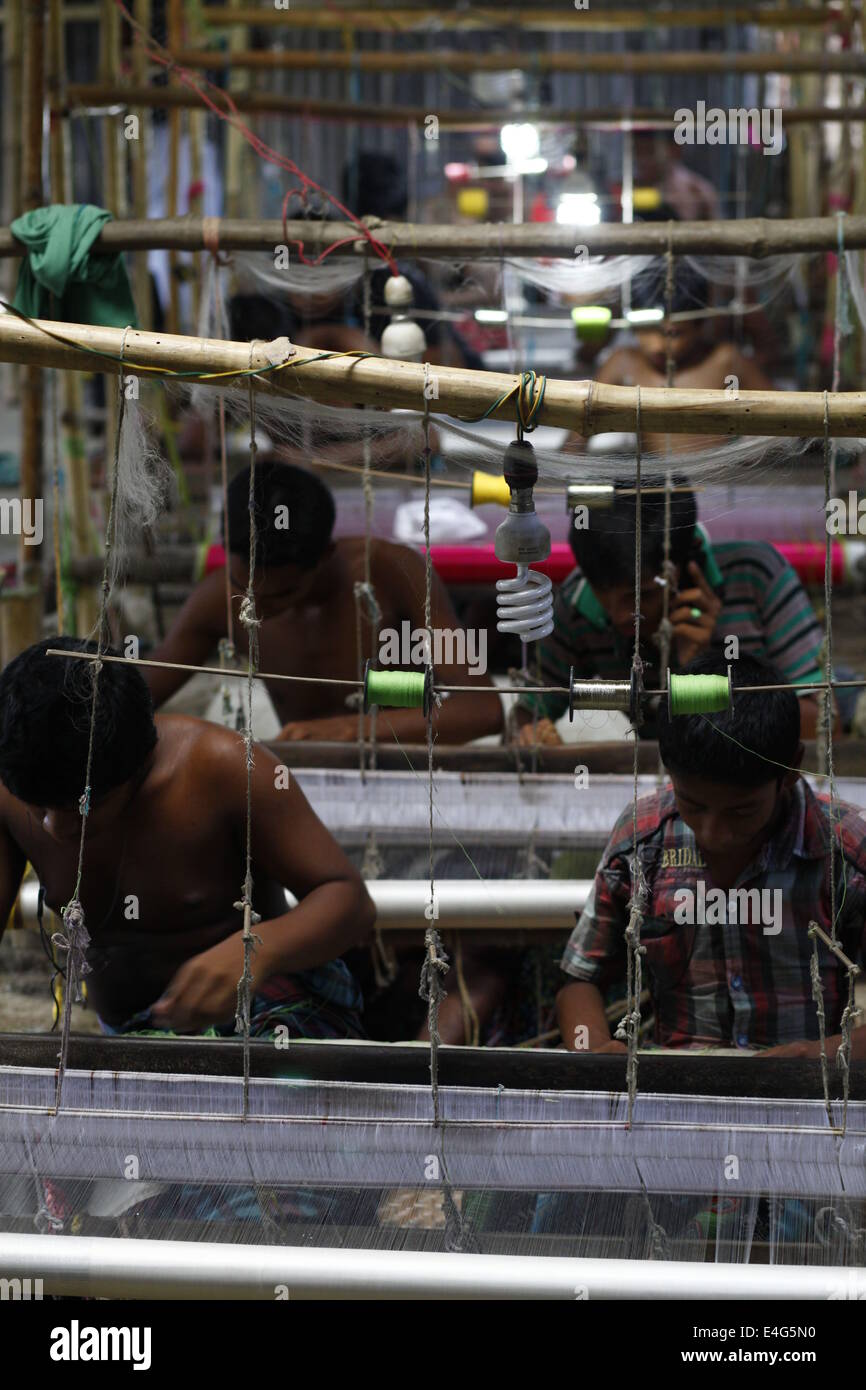July 10, 2014 - Weavers weave famous Jamdani Saree.A sharee is the traditional garment worn by women in the Indian subcontinent. It is a long strip of unstitched cloth, ranging from five to nine yards in length, which can be draped in various style. The most common style is for the sari to be wrapped around the waist, with one end then draped over the shoulder.The Sharee boasts of the oldest existence in the world. It is more than 5,000 years old! Some people think that sharee is influenced by Greek or Roman toga, which we see on ancient statues.

Image details
Contributor:
ZUMA Press, Inc. / Alamy Stock PhotoImage ID:
E4G5N0File size:
60.2 MB (1.8 MB Compressed download)Releases:
Model - no | Property - noDo I need a release?Dimensions:
3744 x 5616 px | 31.7 x 47.5 cm | 12.5 x 18.7 inches | 300dpiDate taken:
10 July 2014Photographer:
ZUMA PressMore information:
This image could have imperfections as it’s either historical or reportage.
July 10, 2014 - Weavers weave famous Jamdani Saree..A sharee is the traditional garment worn by women in the Indian subcontinent. It is a long strip of unstitched cloth, ranging from five to nine yards in length, which can be draped in various style. The most common style is for the sari to be wrapped around the waist, with one end then draped over the shoulder...The Sharee boasts of the oldest existence in the world. It is more than 5, 000 years old! Some people think that sharee is influenced by Greek or Roman toga, which we see on ancient statues. Although, there is no solid evidence and no conclusion. Saree is essentially designed to suit local conditions in this subcontinent..There are at least six varieties of Bengal handlooms, each deriving its name from the village in which it originated, and each with its own distinctive style. Dhaka was especially renowed for sharees (muslin) and even today..Jamdani is basically the transited form of the world famous Dhakai Muslin. According to their variety, fineness, knittings etc. The traditional Dhakai Muslins were divided into some specific groups. Among them AAB-E-ROUHAN, SHABNAM, SARBAND and JAMDANI MUSLIN were the most famous. Over the years the first three have vanished from history. The production, marketing and export of Jamdani’ve somehow maintained its continuity...The history of Dhakai Muslin or Dhaka Jamdani is more ancient than the history of Dhaka town itself. Dhaka has a history of only four hundred years from 1610 A.D. When Subadar Islam Khan Chrishti of the then Subah Bangla transferred his capital city from Rajmahal to Dhaka. But the history of the cotton clothes of the region holds a more ancient tradition. Although jamdani history’s lost in the mists of antiquity. It’s known that trade in the fabric was established at least 2, 000 years ago. In Chanakya’s Arthasastra one finds reference to the fine cottons of ‘Vanga’, historically the central southern region of East Bengal and Chanakya’s t